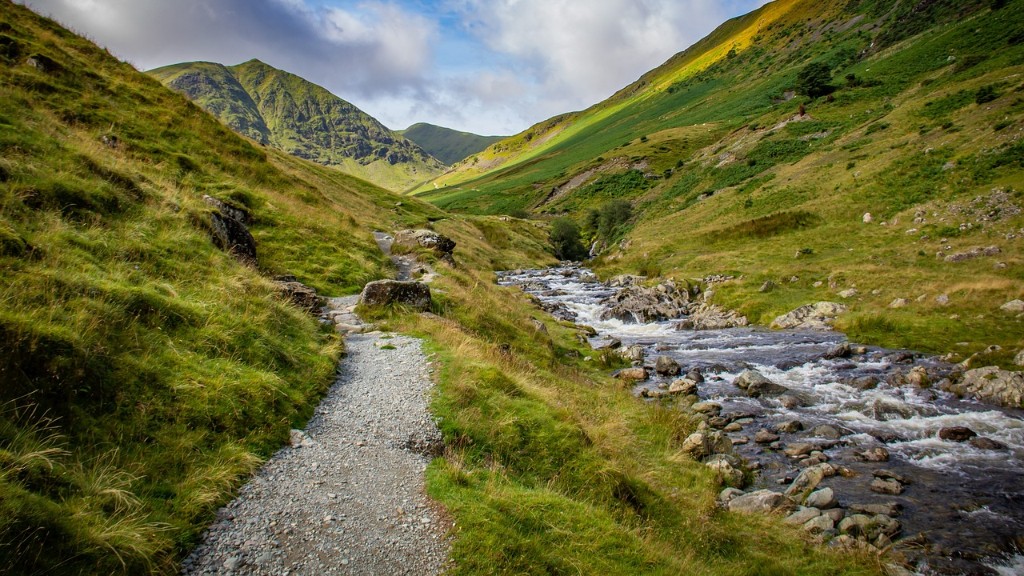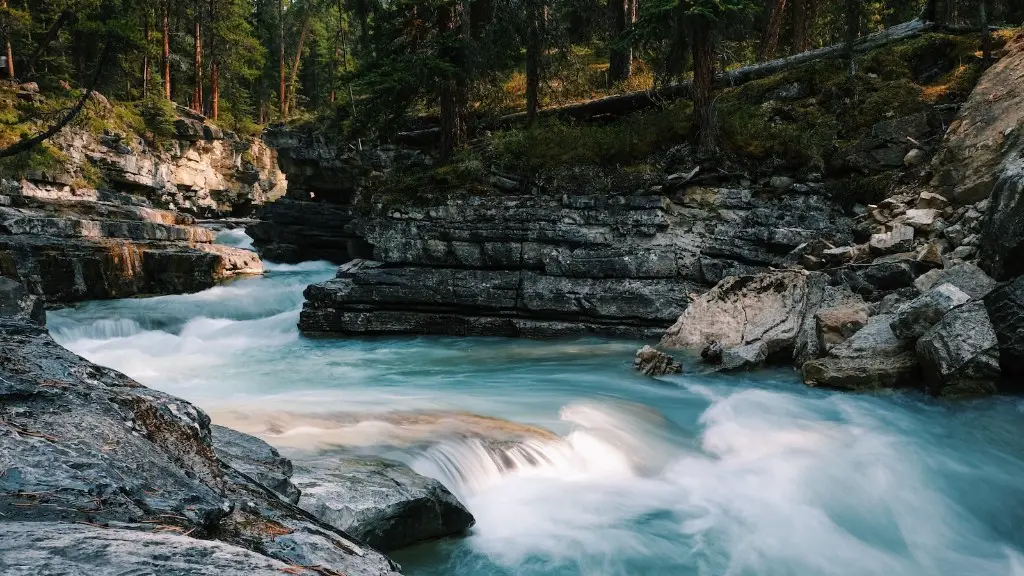The Ganges River is the largest river in India and one of the most sacred rivers in Hinduism. It is also one of the longest rivers in the world, with a length of over 2,600 miles. The Ganges River begins in the Himalayan Mountains and flows through the countries of India and Bangladesh. The river is considered holy by Hindus and is a major part of Hindu religious ceremonies. Millions of Hindus visit the Ganges River each year to bathe in its waters, which are believed to have cleansing properties.
The Ganges River is in India.
What country is the Ganges River in?
The River Ganges is one of the most important rivers in Asia. It emerges in the western Himalayas and flows down across northern India into Bangladesh, where it empties into the Bay of Bengal. Nearly 80% of the Ganges river basin is in India, the rest is in Nepal, China and Bangladesh. The river is considered sacred by Hindus and is a major source of water for agriculture and industry in India.
The Ganges River is a vital resource to Asia, but it faces many threats. These include pollution from industry and agriculture, as well as the effects of climate change. The river is also under pressure from the growing population in the region, which is putting strain on its resources.
There are some initiatives underway to try and address these threats, but more needs to be done to protect this vital resource.
What is the Ganges River famous for
The Ganges River is most sacred in the Hindu tradition. It is understood as the personification of the Goddess Ganga. Hindu belief holds that bathing in the river on certain occasions causes the forgiveness of transgressions and helps attain salvation.
The Ganges is one of the most polluted rivers on the planet. The main sources of pollution are urban sewage, animal waste, pesticides, fertilizers, industrial metals and ashes from cremated bodies. The river is also winding, making it difficult to clean up.
How toxic is Ganges?
The Ganges is one of the most polluted waterways in the world due to the large amount of sewage that is emptied into it every day. Only about half of the sewage that is dumped into the river undergoes any kind of treatment, meaning that the river’s waters are full of contaminants and pollutants. This is a major problem for the millions of people who rely on the Ganges for their drinking, bathing, and washing water.
The untreated sewage dumped into the river, industrial waste, agricultural runoff, remnants of partially burned or unburned bodies from funeral pyres, and animal carcasses all contribute to polluting the Ganges. High levels of disease-causing bacteria and toxic substances have also been found in the Ganges. As a result, the river has become a major source of water-borne diseases in India. Every year, thousands of people die from diseases contracted from bathing in or drinking the water of the Ganges.
Is the Ganges River in Africa?
The Ganges is one of the most important rivers in Asia. It is especially important to Hindus in India, who consider the river to be holy. The river basin is located in Asia, and the source of the river is in the Himalayas. The Ganges River is known as the Ganga in Hindi and other Indian languages. The river flows through northern India and Bangladesh.
The Ganges is one of the major rivers of the Indian subcontinent, flowing through the countries of India and Bangladesh. For most of its course, the Ganges flows through Indian territory, although its large delta in the Bengal area is shared with Bangladesh. The Ganges is a sacred river to Hindus and is worshipped as a goddess, known as the Ganga. pilgrims often bathe in the river as a way of cleansing themselves spiritually. The river is also an important source of water for irrigation and drinking water for millions of people.
What kind of country is India
The Sovereign Socialist Secular Democratic Republic of India is a parliamentary democracy with a multiparty system. The President of India is the head of state, and the Prime Minister of India is the head of government. The Indian Parliament is bicameral and consists of the Lok Sabha (House of the People) and the Rajya Sabha (Council of States). The Parliament exercises ultimate legislative authority in India.
The Constitution of India, the supreme law of the land, defines the structure and powers of the Indian government and guarantees certain fundamental rights to the citizens of India. India is a federal republic consisting of 29 states and 7 union territories. The states and union territories are further divided into districts.
The Indian economy is a mixed economy, with a variety of private and public sector enterprises and a strong focus on economic liberalization. India is a member of the United Nations, the World Trade Organization, the G20, the International Monetary Fund, and the World Bank.
The River Ganga is known for its clean and holy water. Many people believe that the water contains bacteriophages, which are viruses that kill bacteria, making the water clean and safe to drink. This is backed up by science, as studies have indeed found bacteriophages in the water of the River Ganga. This is one of the reasons why the river is so revered by Hindus.
What are 3 facts about the Ganges River?
The Ganges River is one of the most important rivers in the world. It begins in an ice cave in the Himalayan Mountains and flows through India and Bangladesh. The river supports over 400 million people and thousands of animal and plant species. It is sacred to the Hindu people and worshiped as a goddess.
The river and its tributaries are a vital water source for hundreds of millions of people. They rely on the river for drinking, bathing and irrigating their land. The river is also a important source of food and transportation.
What happens if you swim in the Ganges
Hindus believe in the power of water to cleanse sins and purify the soul. For many Hindus, no matter how dirty the water is, it is still holy and they will take a dip in it. Sprinkling a little water on the head is also a practice in Hinduism, as it is believed to be equivalent to being blessed by the water. This is a way of losing one’s sins and purifying oneself.
The river stinks because of the untreated sewage and effluents from the tanneries that are going into it. This is a serious problem because it can lead to serious health problems for people who use the river for bathing or drinking.
Which river is dirty in India?
The Yamuna is one of the holiest rivers for Hindus, and is also among the most polluted in the world. The river is 1,376 km (855 miles) long, and flows through the states of Uttar Pradesh, Haryana, and Delhi in India. The Yamuna is considered to be the second most sacred river in Hinduism after the Ganges, and is worshipped as the goddess Yamuna.
The river is highly polluted due to the discharge of sewage and industrial effluents into it. The pollution has caused the river to turn black in many parts, and has also led to the depletion of fish and other aquatic life in the river. The government has taken some steps to clean up the river, but much more needs to be done to protect this important waterway.
Hindus believe in the cycle of death and rebirth, and that sins committed in past and present lives can hinder their progress. They believe that cleansing themselves of these sins by bathing in the Ganges on the most auspicious day of the festival can help them to move on to the next life.
What was the curse on Ganga
The Ganga and Saraswati rivers are two of the most important rivers in Hinduism. The Ganga is considered to be a holy river, and is worshiped as a goddess. The Saraswati is considered to be the goddess of knowledge and wisdom.
These two rivers have a long and complicated history. According to legend, the Ganga was once a goddess who lived in heaven. She was cursed by the goddess Lakshmi and was forced to incarnate as a river on earth. In turn, the Ganga cursed Saraswati, saying that sinful men would cleanse themselves of their sins with her water.
The Saraswati river is believed to have dried up long ago. Some Hindus believe that the Ganga took away the Saraswati’s waters when she was incarnated as a river on earth. Other Hindus believe that the Saraswati dried up on her own due to the curse.
Either way, the Ganga and Saraswati rivers are significant in Hinduism. They are both worshiped as goddesses and are considered to be holy rivers.
The idea that locals have built up an immunity to the river’s bacteria is a myth. Even if their mission is to clean it up, people who bathe in the river can still get sick.
Final Words
The Ganges River is a river in India that is sacred to Hindus. It is also one of the longest rivers in India.
The Ganges River is a river in southern Asia that rises in the Himalayas and flows east into the Bay of Bengal. The Ganges is one of the holiest rivers in Hinduism and its waters are considered to be purifying.





